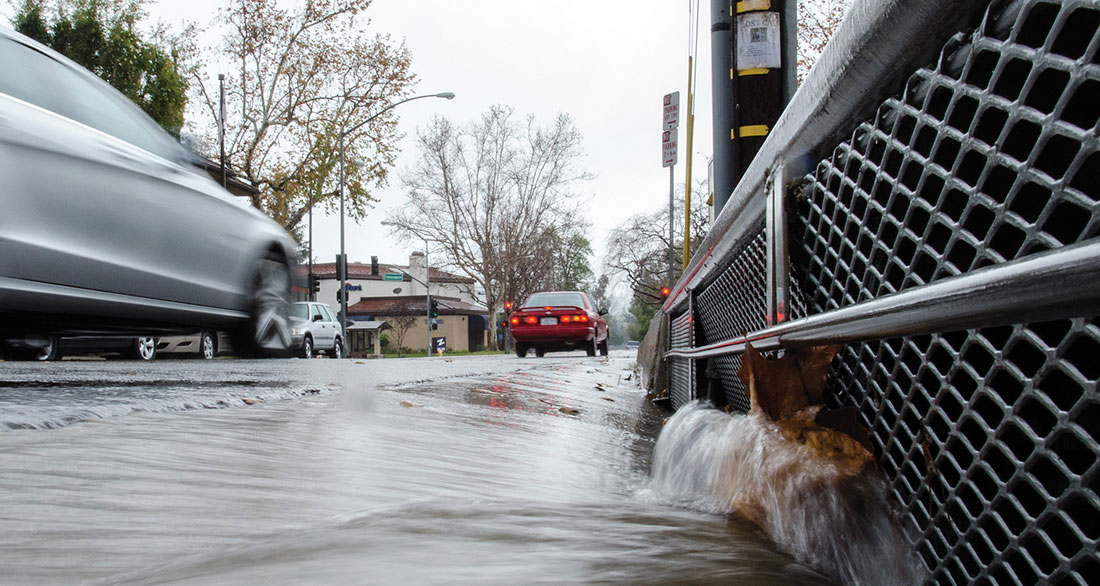Protection of Los Angeles County’s surface water
In the State’s urbanized areas, the concrete and asphalt freeways, roads, parking lots and driveways constitute miles of impervious surface area where rainwater is efficiently channeled into storm drains and water bodies. In Los Angeles County and many other areas in the state, the storm water infrastructure (gutters, drains, culverts, etc.,) are not part of the sanitary sewer system and therefore water traveling through them enters its final destination (in many cases the ocean) untreated. This runoff of storm water from impervious surfaces is proving to be a significant source of pollution, including from fertilizers, pesticides and other contaminates.
Although it might be surprising to some people, agricultural pesticide use is not the largest contributor to surface and groundwater contamination. Recent investigations by the University of California and the California Department of Pesticide Regulation have shown that surface waters fed by urban runoff may contain a concentration of monitored pesticides up to three times higher than those fed by agricultural runoff.
L.A. County’s commitment to environmental stewardship
Los Angeles County government consists of individual departments, commissions and their governing body, the Board of Supervisors. Many are guardians of public resources including water, fragile watersheds and wildlife habitat. They take their responsibilities seriously and are deeply committed to protecting the environment through careful stewardship which includes adopting the IPM tenets, policies and procedures established in this program.
Environmental partners
Los Angeles County government, through many of its departments and commissions, has forged some extremely strong and lasting professional relationships with a wide variety of environmental partners. The Department of Agricultural Commissioner/Weights and Measures (ACWM) is a permanent co-chair of the County’s enduring Weed Management Area (WMA) through which grants are acquired, habitat restored and invasive species detected and controlled. ACWM receives funding from the California Department of Pesticide Regulation (CDPR) and, under their guidance, regulates pesticide use, stops illegal pesticide sales, and investigates environmental damage related to pesticides. ACWM works directly with the California Department of Food and Agriculture (CDFA) to prevent the introduction into the County of some of the nation’s most destructive pests of watershed and other fragile habitat. Over the decades, joint CDFA/ACWM efforts at excluding agricultural pests have allowed agricultural as well as backyard fruit and vegetable growing possible with literally thousands of pounds less pesticide active ingredients being required.
The Department of Public Works has established an entire division (Watershed Management Division) to work with the Regional Water Quality Control Board, and others, to help protect and restore the County’s watersheds and surface water. In some way, an individual, team, unit or division within a Los Angeles County department is working with one or more environmental partners to:
- Prevent illegal dumping
- Cleanup illegal dumpsites
- Test ground and surface water for the presence of contaminants
- Protect native trees
- Prevent overgrazing
- Restore habitat
- Control invasive species
- Prevent contamination from landfills



